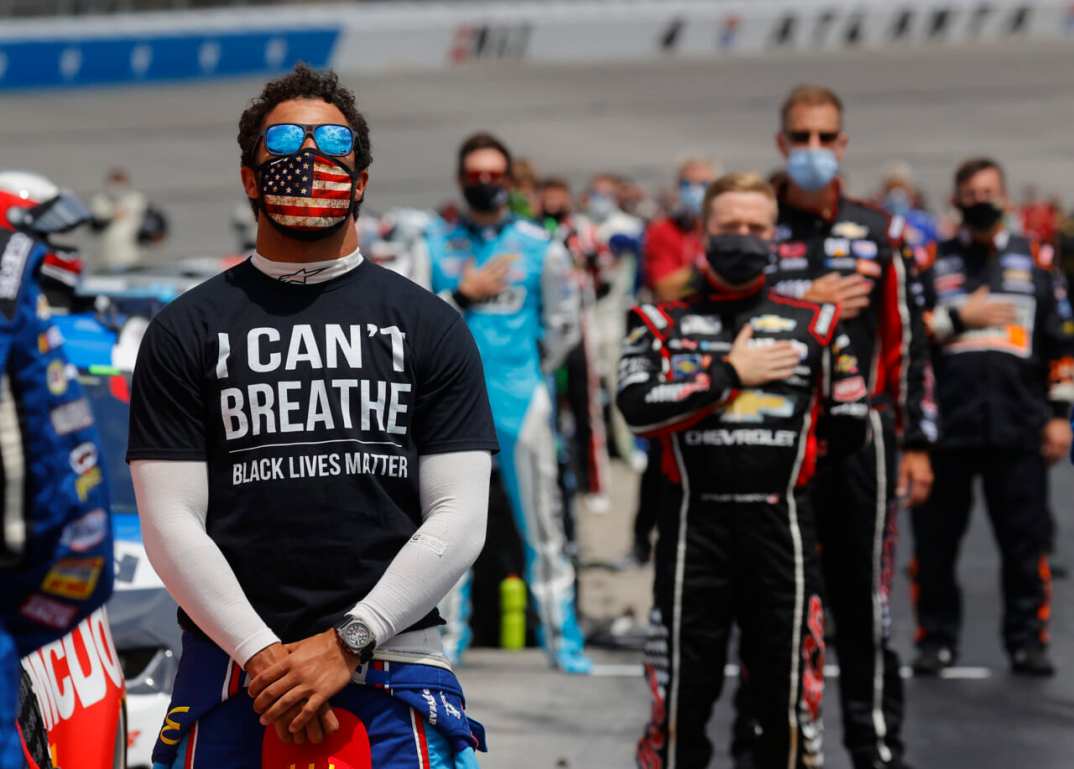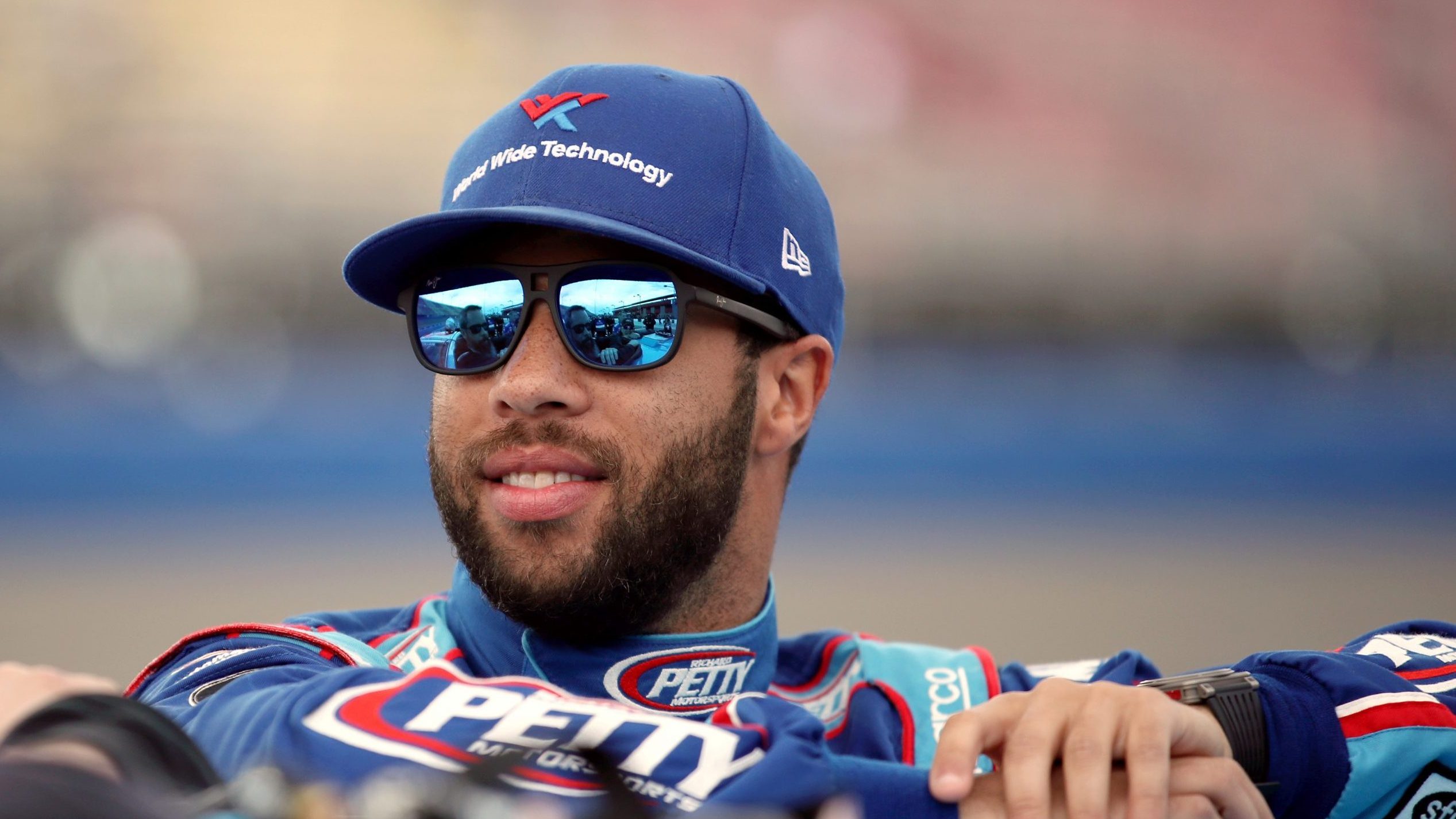The noose was not intended for Bubba Wallace. So What?
OPINION: Ron Thomas, director of the Morehouse College Journalism and Sports Program, says regardless of the facts, NASCAR owed an apology for its past racism

So what? That it turned out the noose in Bubba Wallace’s garage No. 4 at Talladega Superspeedway was not hung there to terrify him.
So what? That critics could misconceive the whole episode as a hoax contrived as another way to dishonor Southern heritage.
So what? That the tears shed by NASCAR President Steve Phelps when he told Bubba about the noose, that the allegiance shown by NASCAR teams when they pushed his car to the front of pit road last Monday at Talladega, and that 82-year-old Richard “The King” Petty descending from his throne to console his young driver was for a noose that been hanging in that stall since last year.
READ MORE: NASCAR releases photo of noose found in Bubba Wallace’s garage
None of that matters. Because NASCAR owed an apology to its extremely small number of Black drivers throughout its history, every Black person who ever worked there or attended a race, and every offended person regardless of color who had to sit in the stands passively for 72 years while Confederate flags waved at them from the racetrack grounds at NASCAR races.
Most of all, it needed to apologize to Wallace, a 26-year-old driver who, like his peers, joined NASCAR simply because he wanted to drive a stock car as fast as he could and as daring as his nerves would allow so he could take the checkered flag.

Bubba Wallace, driver of the #43 Victory Junction Chevrolet, stands by his car before qualifying for the NASCAR Cup Series Auto Club 400 at Auto Club Speedway on February 29, 2020 in Fontana, California. (Photo by Katelyn Mulcahy/Getty Images)
But because – like his Black predecessors Wendell Scott, Willy T. Ribbs and Bill Lester – he was the only fulltime Black driver on the circuit when George Floyd died with a knee on his neck, Wallace had to lead NASCAR out of its racist past by insisting that it ban the Confederate flag forever.
Those who say that NASCAR only banned a symbol of Southern heritage are lying to themselves and to the public. What NASCAR really banned was a symbol of more than 400 years of domestic terrorism against Black people, a vestige of which still goes on today.
Just ask the relatives of Floyd, Ahmaud Arbery, Breonna Taylor and Rayshard Brooks.
READ MORE: Ahmaud Arbery’s mother to Breonna Taylor’s mother: ‘Don’t give up’
Wallace also did NASCAR a huge favor by giving the OK to would-be auto racing fans who have been waiting to come to the track but knew there would be a whole lot of explaining to do to their race-conscious friends if they did that. Now NASCAR, which badly needs to broaden its fan base, can invite everyone in without asking them to ignore the shameful coat of arms that used to hang in its speedways.
As a Black teenager growing up in the 1960s, I used to watch highlights of the Daytona 500 on ABC’s Wide World of Sports and I’d see lesser races on other networks. I definitely recognized the names of star NASCAR drivers such as Junior Johnson, Fred Lorenzen, and Ed “Fireball” Roberts.
My dad took my brother and me to baseball, basketball, football games and wrestling matches, and dad loved cars. If fact, he found my first car for me, a bright red 1965 Plymouth Barracuda muscle car. But if we had asked to go to a NASCAR race, I’m sure he would have said no.
After all, he was raised in Brunswick, Georgia, where Ahmaud Arbery was killed while jogging, so dad knew a lot worse than a Confederate flag probably would have greeted us at the racetrack. But I’m hopeful now that the parents of tomorrow’s Black kids will feel safe taking their children to an actual NASCAR event.
So what if the noose hanging in garage No. 4 wasn’t intended for Bubba Wallace? For the first time ever, a noose did something positive. It gave him, his fellow drivers and pit crew members the opportunity to march NASCAR down the road into the right side of history, opening racetrack gates for fans of all colors and ethnic groups in the future.
 Ron Thomas has been the director of Morehouse College’s Journalism and Sports Program since 2007. Previously, for 34 years he covered major college and professional sports mainly at the San Francisco Chronicle, other Bay Area papers and USA Today, where he was its first pro basketball reporter. Thomas specializes in writing about the racial dynamics of sports. His book “They Cleared the Lane: the NBA’s Black Pioneers” is the only one written about the integration of the NBA in 1950. In 2017, Thomas was given the Morehouse College Professor of the Year Award and the National Association of Black Journalists’ Legacy Award.
Ron Thomas has been the director of Morehouse College’s Journalism and Sports Program since 2007. Previously, for 34 years he covered major college and professional sports mainly at the San Francisco Chronicle, other Bay Area papers and USA Today, where he was its first pro basketball reporter. Thomas specializes in writing about the racial dynamics of sports. His book “They Cleared the Lane: the NBA’s Black Pioneers” is the only one written about the integration of the NBA in 1950. In 2017, Thomas was given the Morehouse College Professor of the Year Award and the National Association of Black Journalists’ Legacy Award.
Have you subscribed to theGrio’s podcast “Dear Culture”? Download our newest episodes now!
https://open.spotify.com/episode/6buxwQax07vR9Y740tPa7x
https://open.spotify.com/episode/3YArZmbRx2yzax6j7D4OvU?t=0
